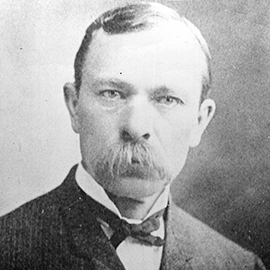
 With a combined 21 years as president and acting president, Joseph T. Kingsbury is the longest-serving leader of the University of Utah. Kingsbury was selected as acting president after the departure of John R. Park and served until the appointment of James Talmage. When Talmage stepped down in 1897, Kingsbury was chosen as president.
With a combined 21 years as president and acting president, Joseph T. Kingsbury is the longest-serving leader of the University of Utah. Kingsbury was selected as acting president after the departure of John R. Park and served until the appointment of James Talmage. When Talmage stepped down in 1897, Kingsbury was chosen as president.
During Kingsbury’s time in office, the U’s present-day campus was established and grew significantly. He guided the university’s relocation from downtown Salt Lake to the 60-acre east bench site and oversaw the building of the first 12 facilities on campus, as well as the block U. In 1904, the legislature granted the university an additional 32 acres of Fort Douglas land.
Under Kingsbury’s leadership, the U added a master’s degree program and schools of law, mines and engineering, education, and medicine. To raise the caliber of students entering the university, Kingsbury increased admission requirements to four years of high school instead of two. He recruited an experienced football coach to improve the team’s performance and later hired an athletics director to expand the athletics program. By the time Kingsbury left office, the number of professors and instructors had more than doubled and the number of students had more than tripled.
A native Utahn, Kingsbury attended the University of Deseret (later named the University of Utah) and Cornell University, then earned his doctorate from Illinois Wesleyan. He joined the U in 1878 as one of just three faculty, where he taught chemistry, geology, and other sciences. After resigning as president in 1916, Kingsbury received a faculty position in the chemistry department and was appointed chairman of a graduate school committee. In 1930, a grand performance venue was built on President’s Circle and named Kingsbury Hall in his honor. Kingsbury died in 1937.
